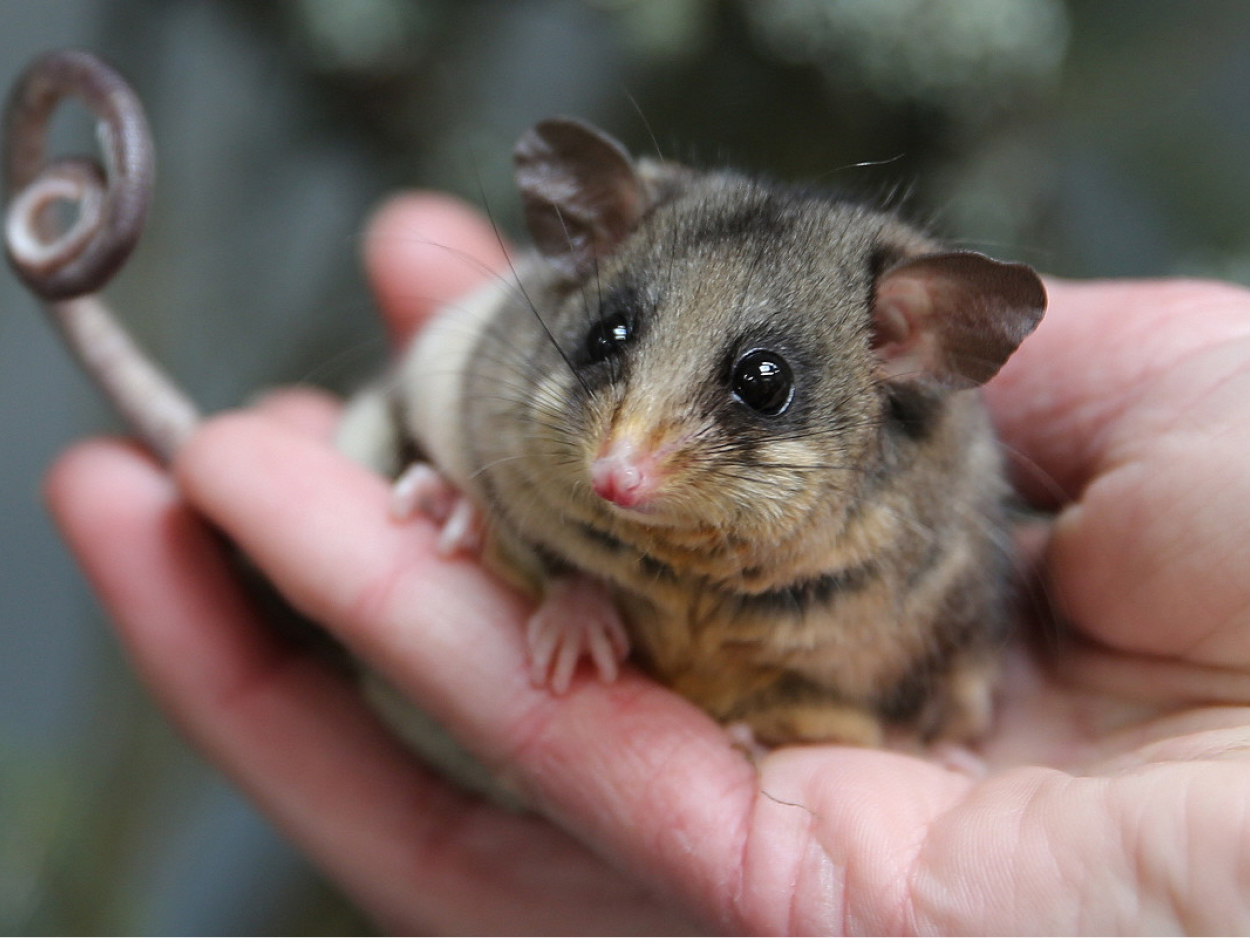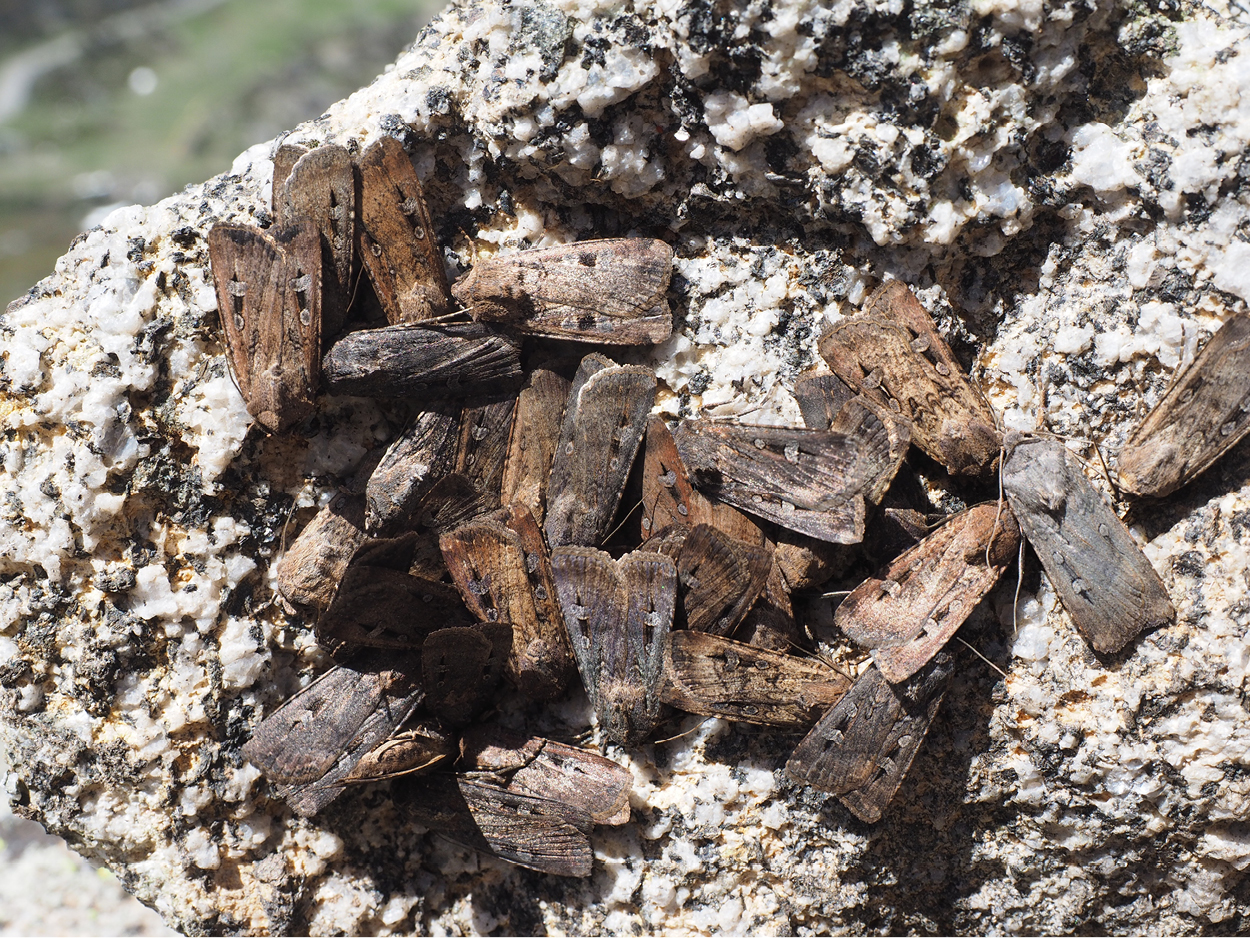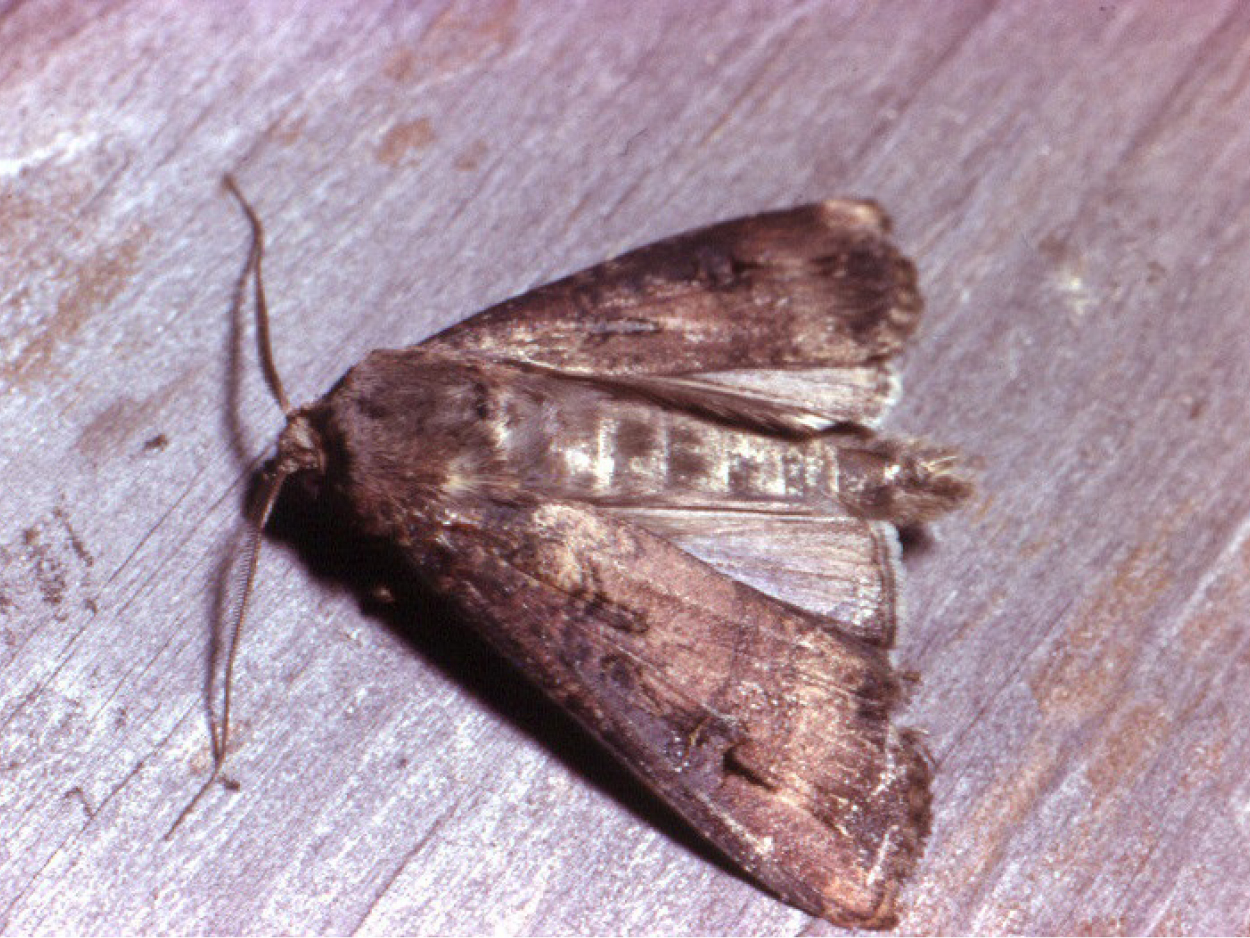Help monitor plummeting Bogong moth numbers and protect endangered Mountain Pygmy-possum
It was an annual ecological phenomenon dating back 7,000 years. Each spring, billions of Bogong moths would migrate from their breeding grounds in southern Queensland, north and western New South Wales and Victoria to the Australian Alps.
An icon of Australian wildlife due to its significant role within ancient aboriginal tribes, the Bogong moth is a primary food source for the endangered Mountain Pygmy-possum during the breeding season.

A Mountain Pygmy-possum. Credit: Zoos Victoria

Bogong moths. Credit: Linda Broome
But in the spring of 2017, moth numbers crashed from around 8.8 billion in alpine areas to just a few individuals. This was observed again the following year.
The failure of moths to appear arrive in the highlands is very likely to be the cause of very poor survival of pouch young for Victorian populations of Mountain Pygmy-possum over those two summers.
And according to experts, the likely cause of this shocking decline in Bogong moth numbers is a lack of rainfall due to winter drought and the effects of climate change impacting breeding grounds.
To get an understanding of the shift in phenological behaviour, Zoos Victoria will launch Moth Tracker, a citizen science tool being co-developed with the Centre for eResearch and Digital Innovation (CeRDI) at FedUni.

In the spring of 2017, Bogong moth numbers crashed from around 8.8 billion in alpine areas to just a few individual. Credit: Australian Museum
Available in mid-September, Moth Tracker will allow anyone, anywhere to geo-locate, photograph and log their moth sighting on any internet enabled device.
The information gathered will provide open source data to the scientific community about Bogong moth numbers, locations and migration timing, assisting with bridging knowledge gaps and alerting the Mountain Pygmy-possum Recovery Team to early warning of possible failed migration in 2019.
Target audiences for the Moth Tracker citizen science platform include environment, youth and community groups across the known geographic range of the Bogong moth migration (pictured below).

Each spring, billions of Bogong moths migrate from their breeding grounds in southern Queensland, north and western New South Wales and Victoria to the Australian Alps. Credit Zoos Victoria
The pilot project will coordinate with the upcoming Lights OFF for the Bogong MOTHS initiative which is calling for lights out at high profile and brightly-lit buildings in a show of support for the critically endangered Mountain Pygmy-possum.
Zoos Victoria will work with public sites located in urban centres along the Bogong Moth migration route (NSW, Vic and ACT) to get lights out throughout September and October to raise awareness about the plight of the Mountain Pygmy-possum and help give migrating moths their best possible chance of making it down to Victoria’s alpine areas.
**To pledge your support for Lights OFF, councils, local governments and business can write to Darcie Carruthers at [email protected]



